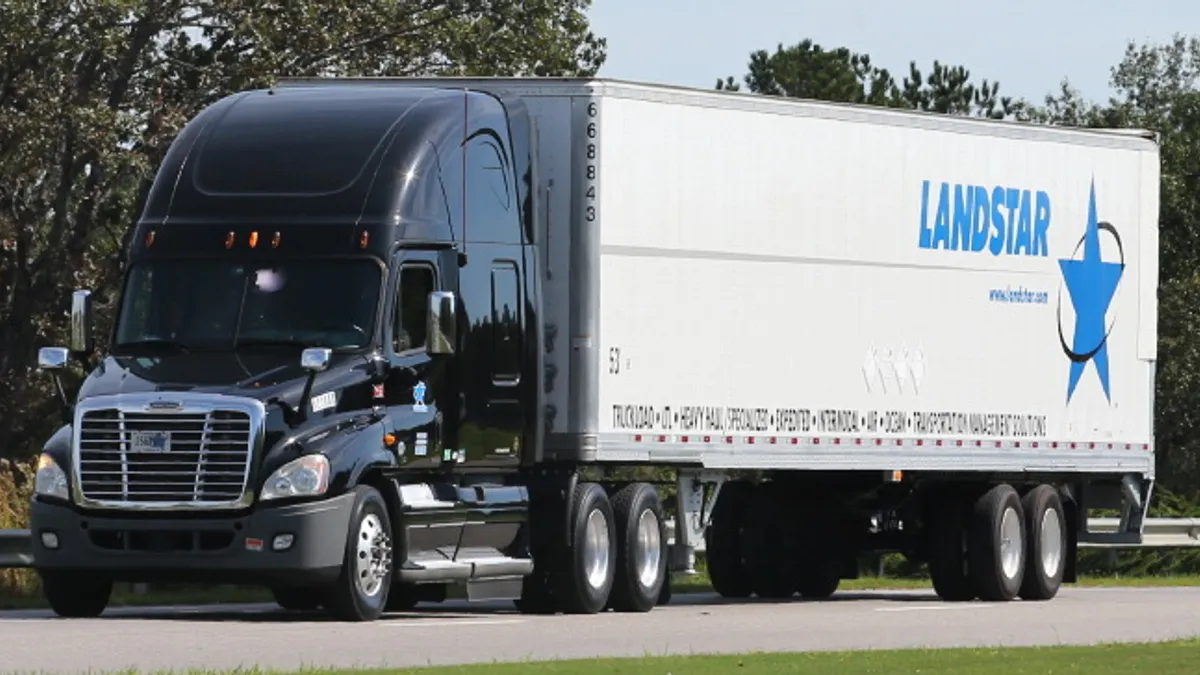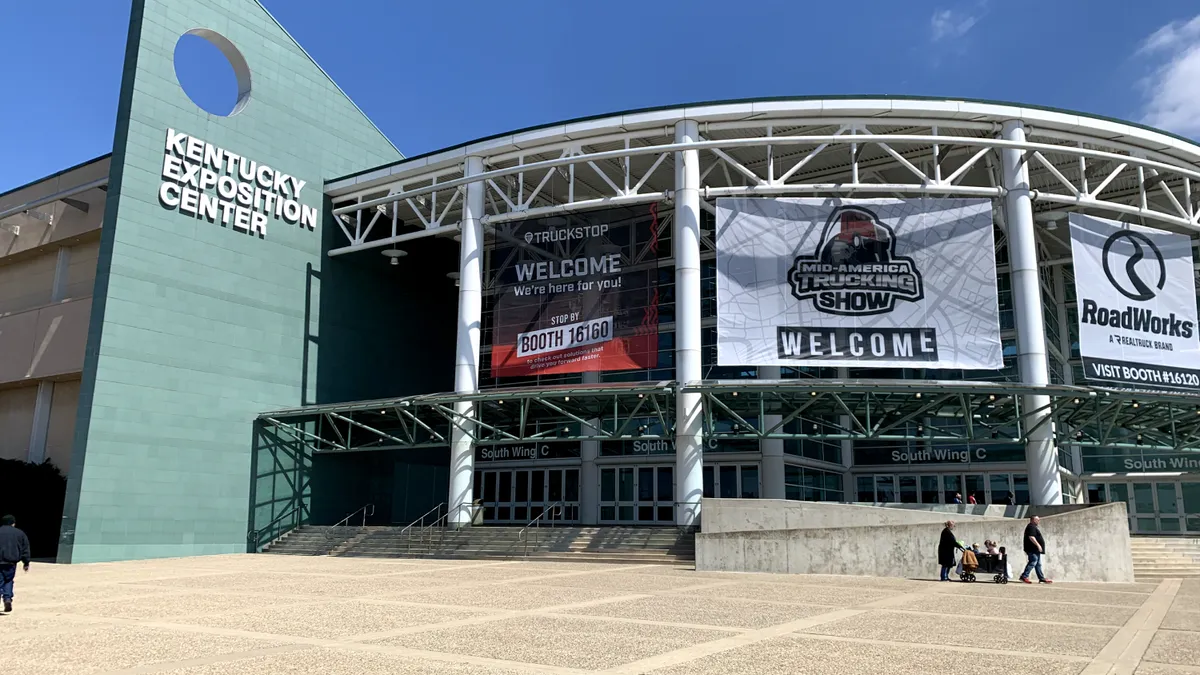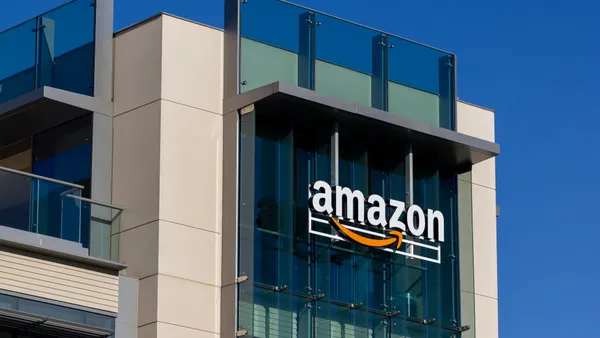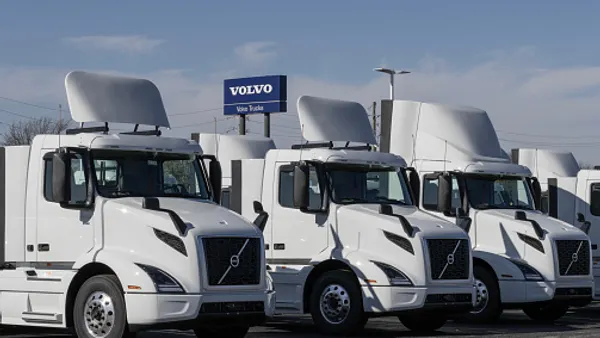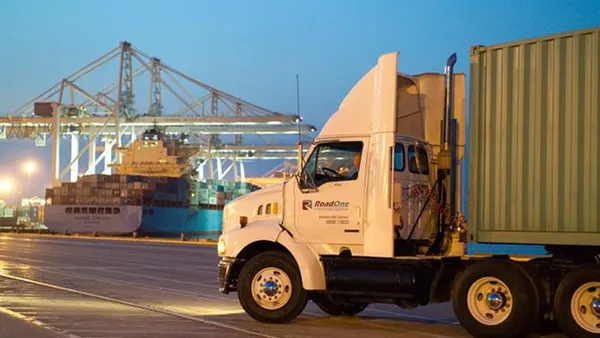Dive Brief:
- Demand for Landstar van service was so strong in Q3 that it altered the carrier's July guidance for the quarter, Landstar CEO Jim Gattoni said during Thursday's earnings call. Landstar raised its guidance in early September when it filed paperwork with the SEC and predicted earnings per share of $1.40 to $1.46, above the company’s prior guidance of $1.11 to $1.17. The company posted earnings per share of $1.61 on Thursday.
- Gattoni said further improvements in the U.S. economy will improve positions for truckload carriers. "Given the ongoing impact of the COVID-19 pandemic and the softness in U.S. manufacturing, the speed and strength of the recovery in the domestic spot market was highly unusual," said Gattoni. "With the current strength in demand and capacity tightness, any additional improvement in U.S. manufacturing ... will further tighten capacity within the transportation and logistics marketplace."
- Revenue per load increased 10% for dry van in Q3 from a year before, Landstar reported, a number that helped drive the company's better-than-expected performance. Flatbed was down 1.7% YoY and intermodal was flat in Q3. The company posted a Q3 net income of $62 million, up 16.5% from Q3 2019.
Dive Insight:
The stronger freight economy surprised carriers in the summer, especially after they spoke to analysts after Q1 and Q2 reports. Gattoni said during the call early July forecasts showed soft demand. But that soft demand did not last.
Gattoni said van demand was a big swing upward as Q3 went on. The unexpected business surge helped Landstar manage through expenses such as insurance, said Gattoni. In July's earnings call, Gattoni said the company had been hit by insurance premium increases of $1.1 million per month.
U.S. manufacturing production fell behind previous performances in 2018 and 2019, according to executives. But Landstar "capitalized on opportunities with new customers and executed by sourcing truck capacity for shippers experiencing rapid volume growth and-or supply chain disruption," officials said.
Landstar was able to meet shipper demand by increasing the number of third-party carriers in its network by 10%, compared to Q2, to more than 41,000 carriers.
Landstar's competitors are also seeing demand for TL capacity. On Wednesday, Knight-Swift reported that a booming freight market led to Q3 revenues and net income that exceeded the numbers from Knight-Swift's Q3 2019 report. Net income was up 63.6% YoY, according to Knight-Swift's Q3 earnings release.
While Knight-Swift sees strong TL demand continuing through 2021, there are signs that TL spot rates have hit a high. On Wednesday, DAT reported spot TL rates "have plateaued as demand for trucks cooled during the week ending Oct. 18," but that "spot rates remain high due to imbalanced networks and tight capacity on specific lanes and markets, and ratios are more than double what they were at this time last year."


